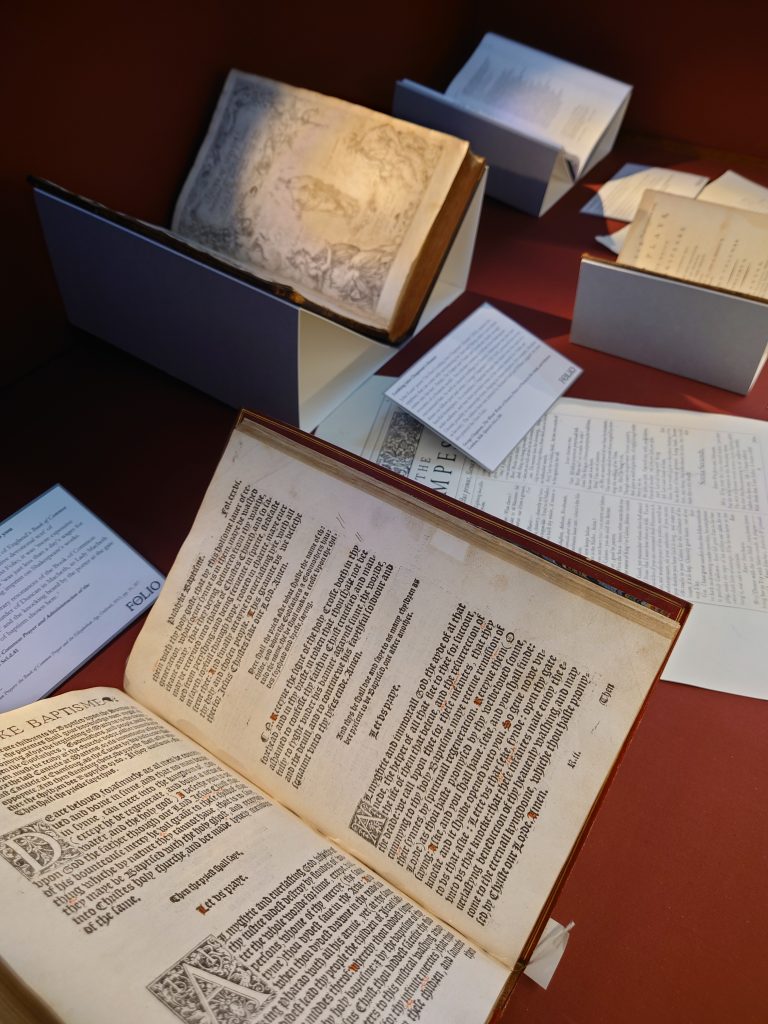This display marks the 400th anniversary of the publication of the first printed collection of Shakespeare’s plays, known as the First Folio, a copy of which is held at Queen’s.
Explore some of the books that informed Shakespeare’s work, and which we might imagine on his desk as he sat down to write.
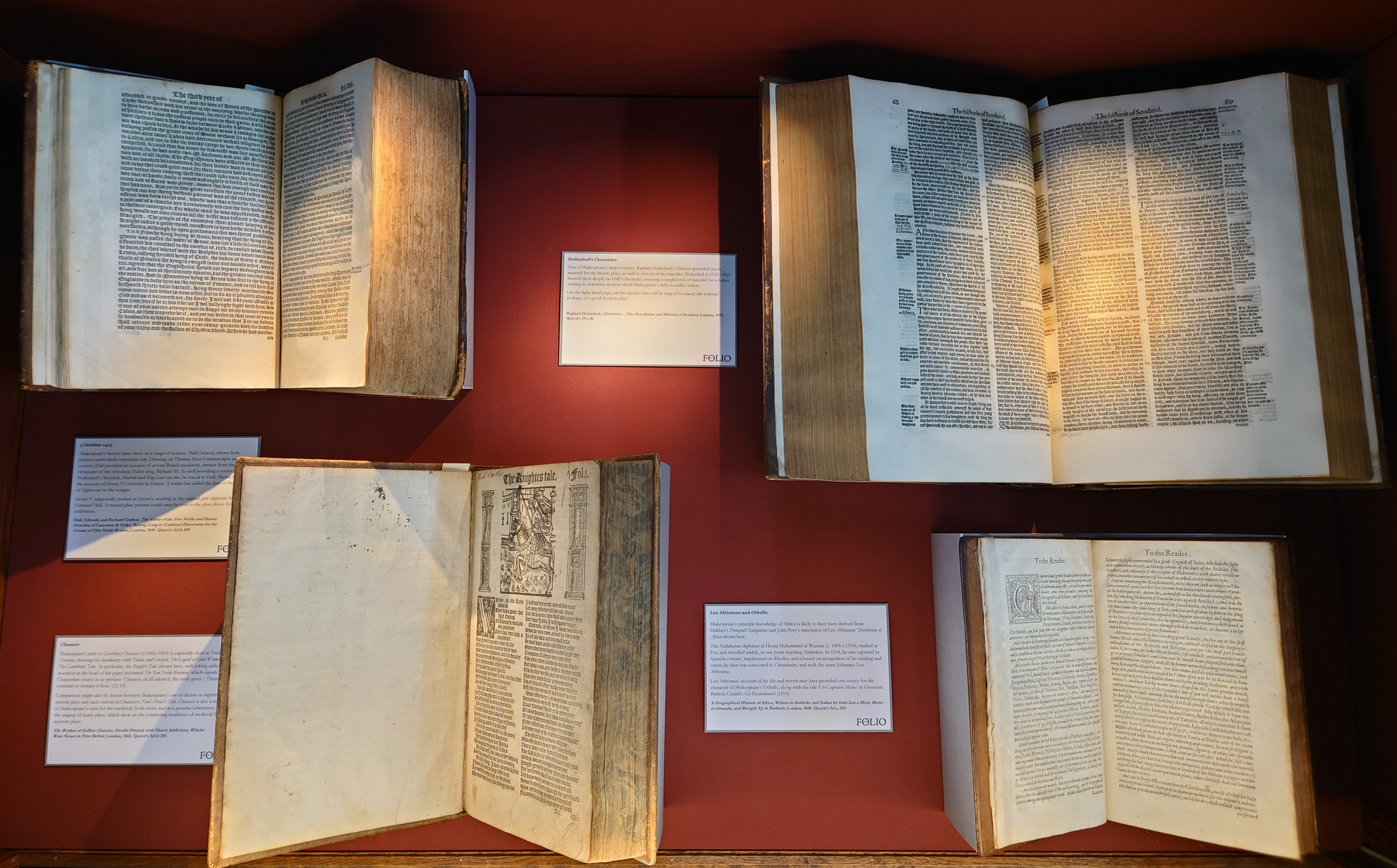
Hall, Edward, and Richard Grafton. The Vnion of the Two Noble and Illustre Famelies of Lancastre & Yorke, Beeyng Long in Continual Discension for the Croune of This Noble Realme, London, 1548. Queen’s Sel.b.189
Raphael Holinshed, Chronicles… The Description and Historie of Scotland, London, 1585. Queen’s 29.e.16.
The Workes of Geffrey Chaucer, Newlie Printed, with Diuers Addicions, Whiche Were Neuer in Print Before, London, 1561. Queen’s Sel.b.201.
A Geographical Historie of Africa, Written in Arabicke and Italian by Iohn Leo a More, Borne in Granada, and Brought Vp in Barbarie, London, 1600. Queen’s Sel.c.159
Hall, Edward, and Richard Grafton. The Vnion of the Two Noble and Illustre Famelies of Lancastre & Yorke, Beeyng Long in Continual Discension for the Croune of This Noble Realme, London, 1548. Queen’s Sel.b.189
Raphael Holinshed, Chronicles… The Description and Historie of Scotland, London, 1585. Queen’s 29.e.16.
The Workes of Geffrey Chaucer, Newlie Printed, with Diuers Addicions, Whiche Were Neuer in Print Before, London, 1561. Queen’s Sel.b.201.
A Geographical Historie of Africa, Written in Arabicke and Italian by Iohn Leo a More, Borne in Granada, and Brought Vp in Barbarie, London, 1600. Queen’s Sel.c.159
5 October 1415
Hall, Edward, and Richard Grafton. The Vnion of the Two Noble and Illustre Famelies of Lancastre & Yorke, Beeyng Long in Continual Discension for the Croune of This Noble Realme, London, 1548. Queen’s Sel.b.189
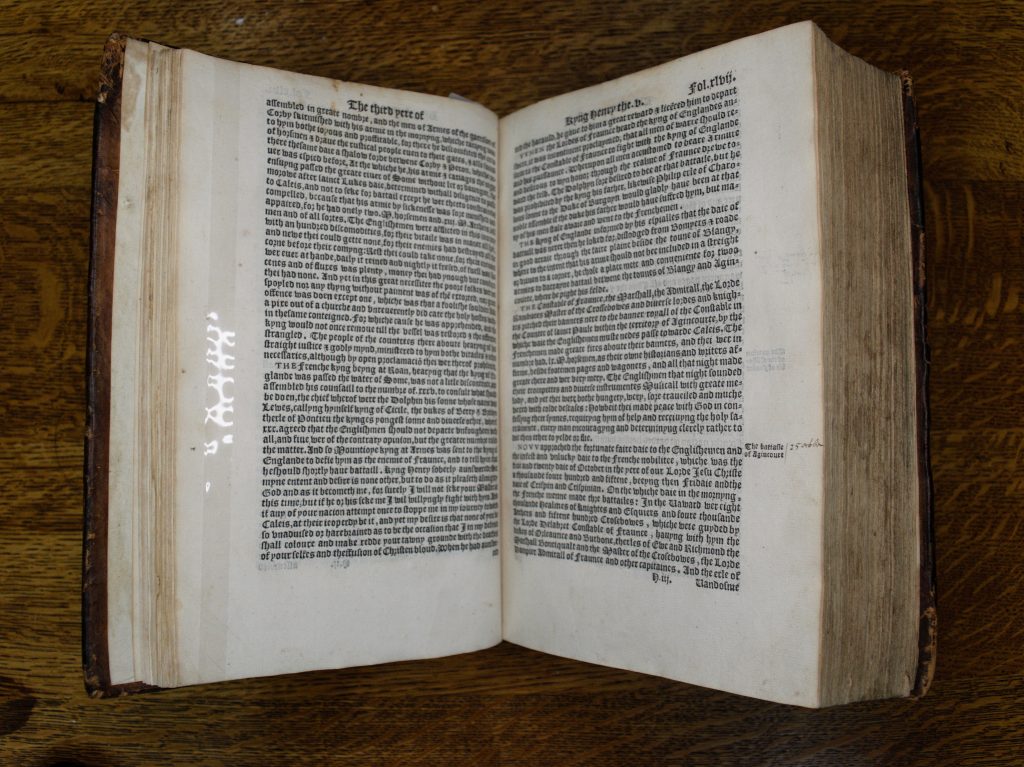
Shakespeare’s history plays drew on a range of sources. Hall’s history, shown here, played a particularly important role. Drawing on Thomas More’s manuscripts and other sources, Hall provided an account of several British monarchs, written from the viewpoint of the victorious Tudor king, Richard III. As well forming a source for Holinshed’s chronicle, Macbeth and King Lear can also be traced to Hall. Shown here is the account of Henry V’s victories in France. A reader has added the date of the Battle of Agincourt to the margin.
Henry V supposedly studied at Queen’s, residing in the original gate opposite St Edmund Hall. A stained-glass portrait could once be seen in the glass above this exhibition.
Chaucer
The Workes of Geffrey Chaucer, Newlie Printed, with Diuers Addicions, Whiche Were Neuer in Print Before, London, 1561. Queen’s Sel.b.201.
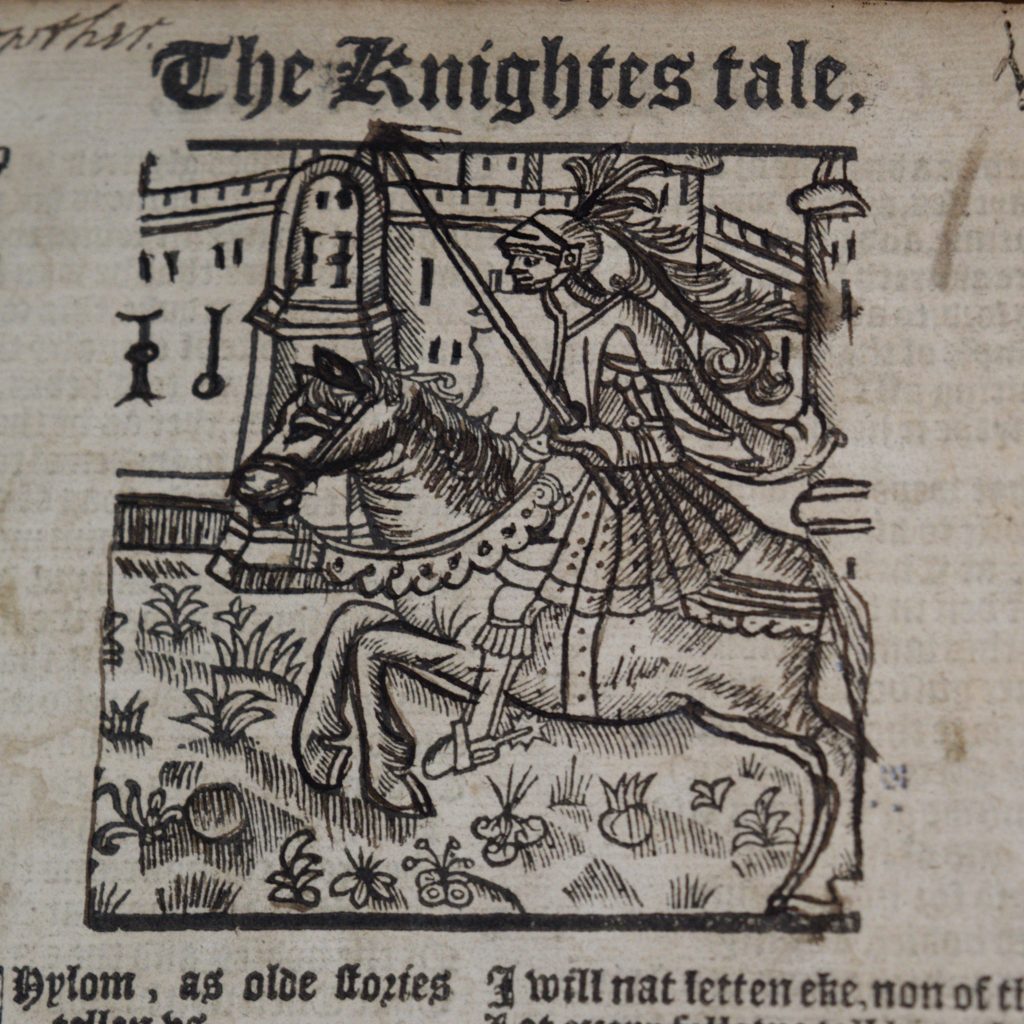
Shakespeare’s debt to Chaucer is especially clear in Troilus and Cresseda, showing his familiarity with Troilus and Criseyde, The Legend of Good Women, and The Canterbury Tales. In particular, the Knight’s Tale (shown here, with inking added to the woodcut at the head of the page) informed The Two Noble Kinsmen, which signals its Chaucerian source in its preface: ‘Chaucer, of all admir’d, the story gives | There constant to eternity it lives’ (12-14).
Comparison might also be drawn between Shakespeare’s use of dream or nightmare in several plays and such visions in Chaucer’s Nun’s Priest’s Tale. Chaucer is also a reminder of Shakespeare’s taste for the medieval, both ersatz and as a genuine inheritance, notably the staging of many plays, which drew on the continuing traditions of medieval Biblical mystery plays.
Holinshed’s Chronicles
Raphael Holinshed, Chronicles… The Description and Historie of Scotland, London, 1585. Queen’s 29.e.16
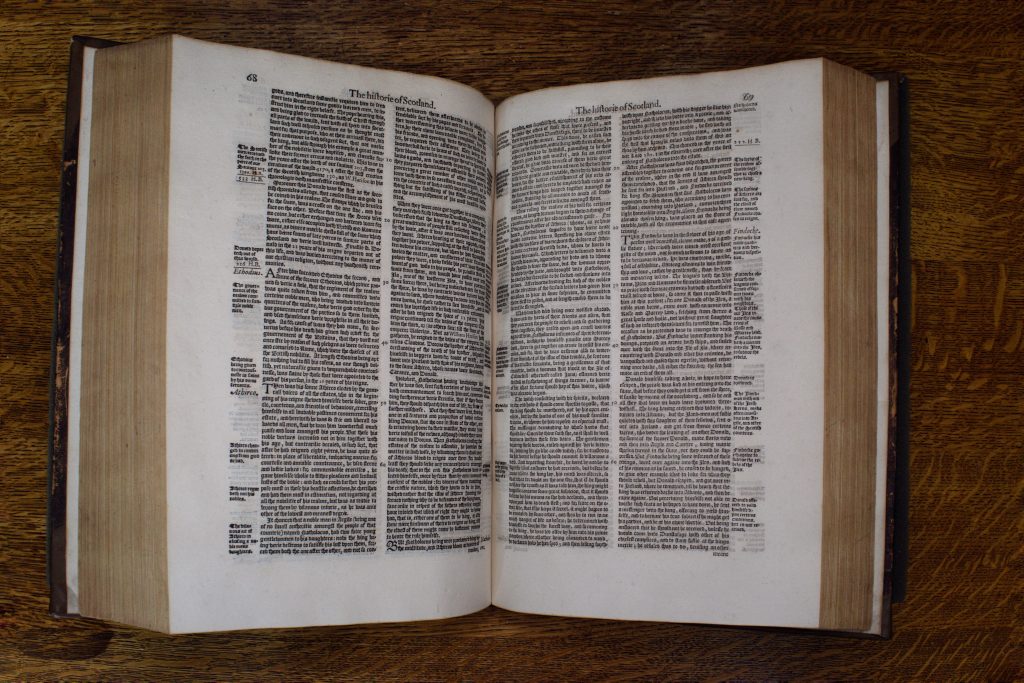
One Shakespeare’s major sources, Holinshed’s Chronicles provided much material for the history plays, as well as several of the tragedies. Holinshed himself drew deeply on Hall’s chronicles, ensuring a tangled mix of material for scholars seeking to determine in more detail Shakespeare’s debt to earlier writers.
On the right-hand page, witches predict who will be king of Scotland; the makings perhaps, of a good Scottish play?
Leo Africanus and Othello
A Geographical Historie of Africa, Written in Arabicke and Italian by Iohn Leo a More, Borne in Granada, and Brought Vp in Barbarie, London, 1600. Queen’s Sel.c.159
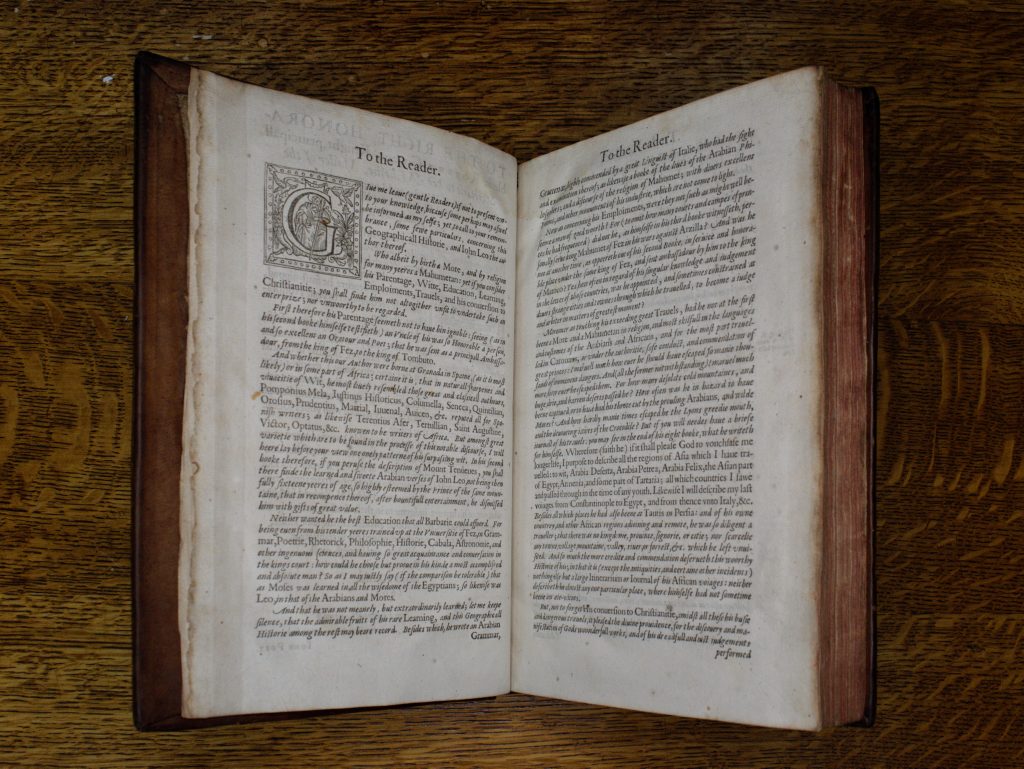
Shakespeare’s principal knowledge of Africa is likely to have been derived from Hakluyt’s Principall Navigations and John Pory’s translation of Leo Africanus’ Description of Africa shown here.
The Andalusian diplomat al-Hasan Muhammad al-Wazzan (c. 1494-c.1554), studied at Fez, and travelled widely, at one point reaching Timbuktu. In 1518, he was captured by Spanish corsairs, imprisoned on Rhodes, and released on recognition of his training and status; he then was converted to Christianity, and took the name Johannes Leo Africanus.
Leo’s account of his life and travels may have provided one source for the character of Shakespeare’s Othello, along with the tale ‘Un Capitano Moro’ in Giovanni Battista Giraldi’s Gli Hecatommithi (1554).
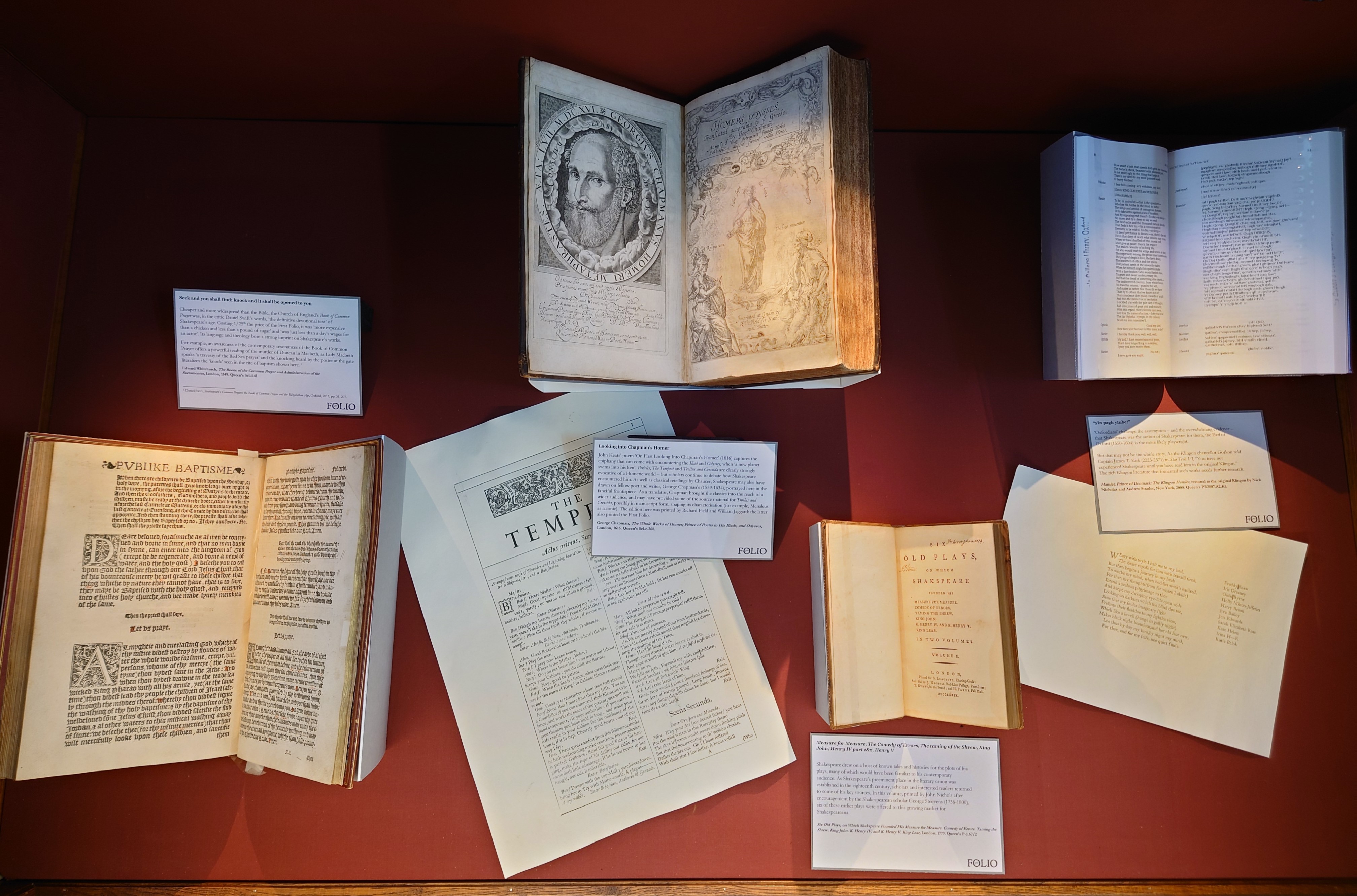
Edward Whitchurch, The Booke of the Common Prayer and Administracion of the Sacramentes, London, 1549. Queen’s Sel.d.41
George Chapman, The Whole Works of Homer; Prince of Poetts in His Iliads, and Odysses, London, 1616. Queen’s Sel.e.268.
Six Old Plays, on Which Shakspeare Founded His Measure for Measure. Comedy of Errors. Taming the Shrew. King John. K. Henry IV. and K. Henry V. King Lear, London, 1779. Queen’s P.e.67/2
Hamlet, Prince of Denmark: The Klingon Hamlet, restored to the original Klingon by Nick Nicholas and Andrew Strader, New York, 2000. Queen’s PR2807.A2.KL
Edward Whitchurch, The Booke of the Common Prayer and Administracion of the Sacramentes, London, 1549. Queen’s Sel.d.41
George Chapman, The Whole Works of Homer; Prince of Poetts in His Iliads, and Odysses, London, 1616. Queen’s Sel.e.268.
Six Old Plays, on Which Shakspeare Founded His Measure for Measure. Comedy of Errors. Taming the Shrew. King John. K. Henry IV. and K. Henry V. King Lear, London, 1779. Queen’s P.e.67/2
Hamlet, Prince of Denmark: The Klingon Hamlet, restored to the original Klingon by Nick Nicholas and Andrew Strader, New York, 2000. Queen’s PR2807.A2.KL
Seek and you shall find; knock and it shall be opened to you
Edward Whitchurch, The Booke of the Common Prayer and Administracion of the Sacramentes, London, 1549. Queen’s Sel.d.41
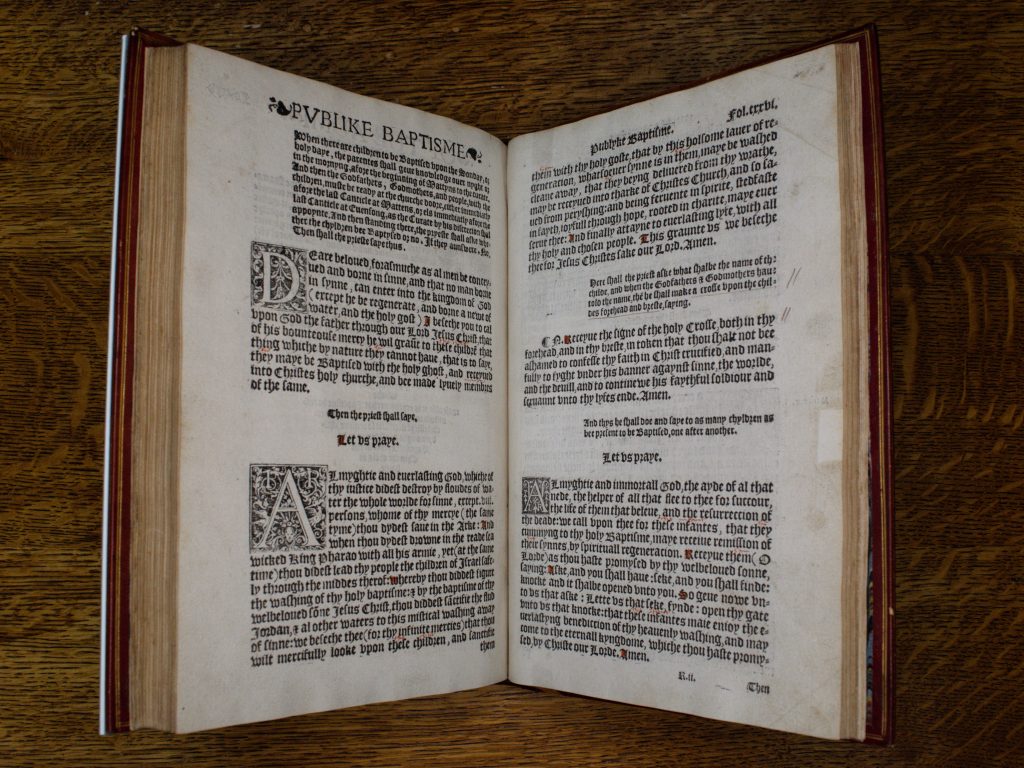
Cheaper and more widespread than the Bible, the Church of England’s Book of Common Prayer was, in the critic Daniel Swift’s words, ‘the definitive devotional text’ of Shakespeare’s age. Costing 1/25th the price of the First Folio, it was ‘more expensive than a chicken and less than a pound of sugar’ and ‘was just less than a day’s wages for an actor’. Its language and theology bore a strong imprint on Shakespeare’s works.
For example, an awareness of the contemporary resonances of the Book of Common Prayer offers a powerful reading of the murder of Duncan in Macbeth, as Lady Macbeth speaks ‘a travesty of the Red Sea prayer’ and the knocking heard by the porter at the gate literalizes the ‘knock’ seen in the rite of baptism shown here.
Looking into Chapman’s Homer
John Keats’ poem ‘On First Looking Into Chapman’s Homer’ (1816) captures the epiphany that can come with encountering the Iliad and Odyssey, when ‘a new planet swims into his ken’. Pericles, The Tempest and Troilus and Cressida are clearly strongly evocative of a Homeric world – but scholars continue to debate how Shakespeare encountered him. As well as retellings via Chaucer, Shakespeare may also have drawn on fellow poet and writer, George Chapman’s (1559-1634), portrayed here in the fanciful frontispiece. As a translator, Chapman brought the classics into the reach of a wider audience, and may have provide some of the source material for Troilus and Cressida, possibly in manuscript form, shaping its characterisation (for example, Menaleus as laconic). The edition here was printed by Richard Field and William Jaggard: the latter also printed the First Folio.
George Chapman, The Whole Works of Homer; Prince of Poetts in His Iliads, and Odysses, London, 1616. Queen’s Sel.e.268.
Measure for Measure, The Comedy of Errors, The taming of the Shrew, King John, Henry IV part 1&2, Henry V
Six Old Plays, on Which Shakspeare Founded His Measure for Measure. Comedy of Errors. Taming the Shrew. King John. K. Henry IV. and K. Henry V. King Lear, London, 1779. Queen’s P.e.67/2
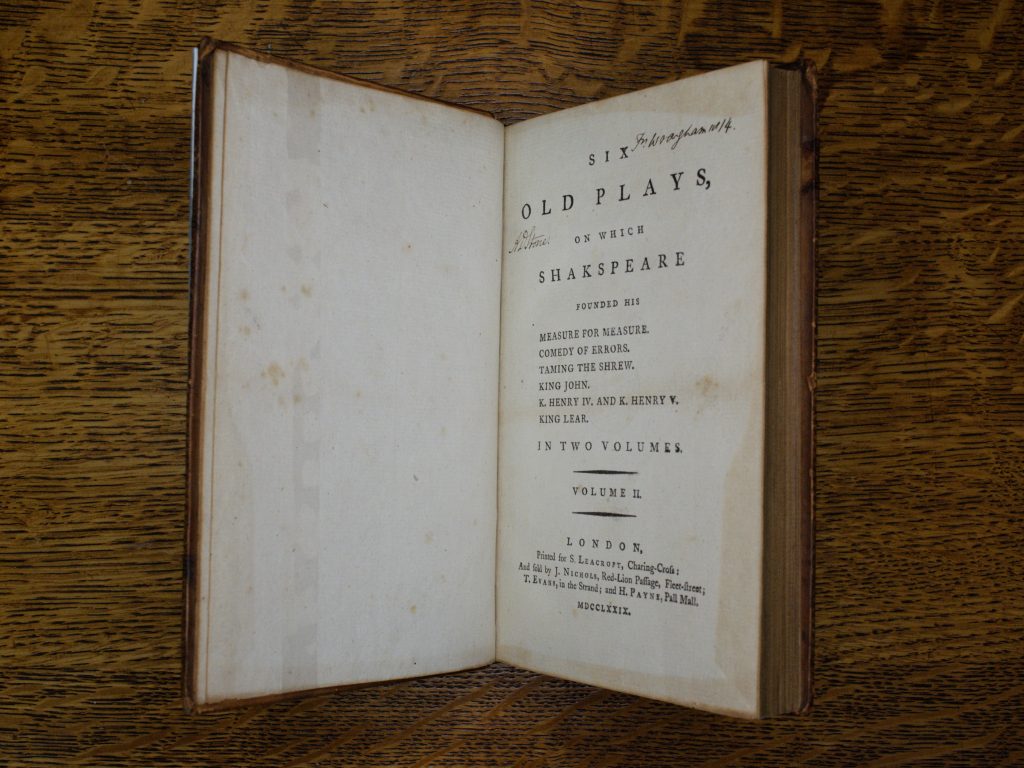
Shakespeare drew on a host of known tales and histories for the plots of his plays, many of which would have been familiar to his contemporary audience. As Shakespeare’s preeminent place in the literary canon was established in the eighteenth century, scholars and interested readers returned to some of his key sources. In this volume, printed by John Nichols after encouragement by the Shakespearean scholar George Steevens (1736-1800), six of these earlier plays were offered to this growing market for Shakespearean information.
“yIn pagh yInbe!”
Hamlet, Prince of Denmark: The Klingon Hamlet, restored to the original Klingon by Nick Nicholas and Andrew Strader, New York, 2000. Queen’s PR2807.A2.KL
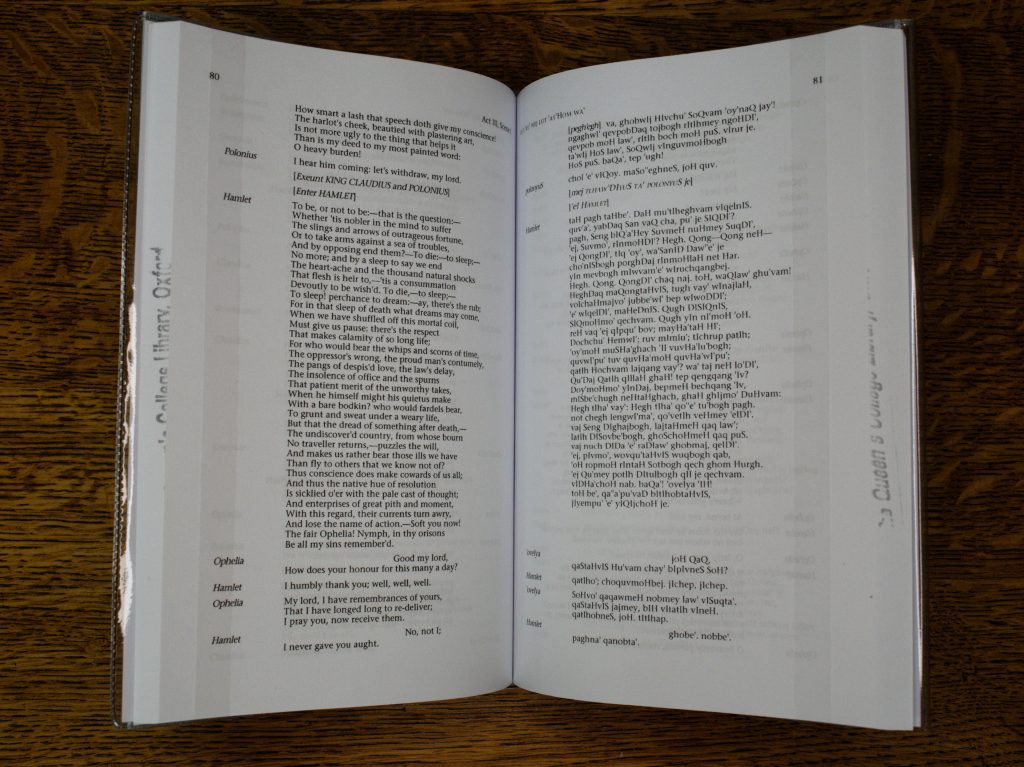
‘Oxfordians’ challenge the assumption – and the overwhelming evidence – that Shakespeare was the author of Shakespeare: for them, the Earl of Oxford is the more likely playwright.
But that may not be the whole story. As the Klingon chancellor Gorkon told Captain Kirk in Star Trek VI, “You have not experienced Shakespeare until you have read him in the original Klingon.”. The rich Klingon literature that fomented such works needs further research.
Curated by Dr Matthew Shaw, College Librarian
Explore more of our exhibitions
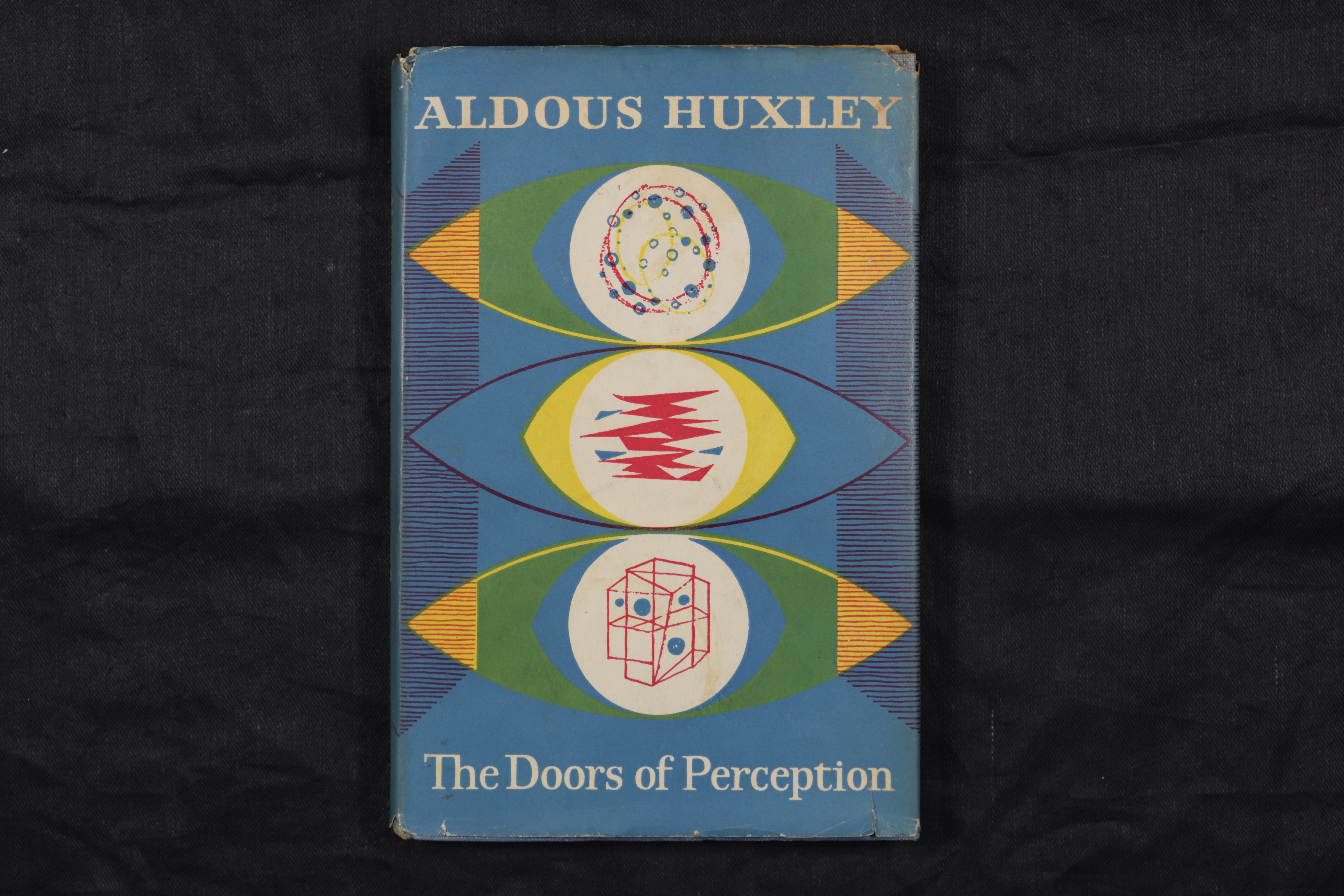
Perception: an exhibition
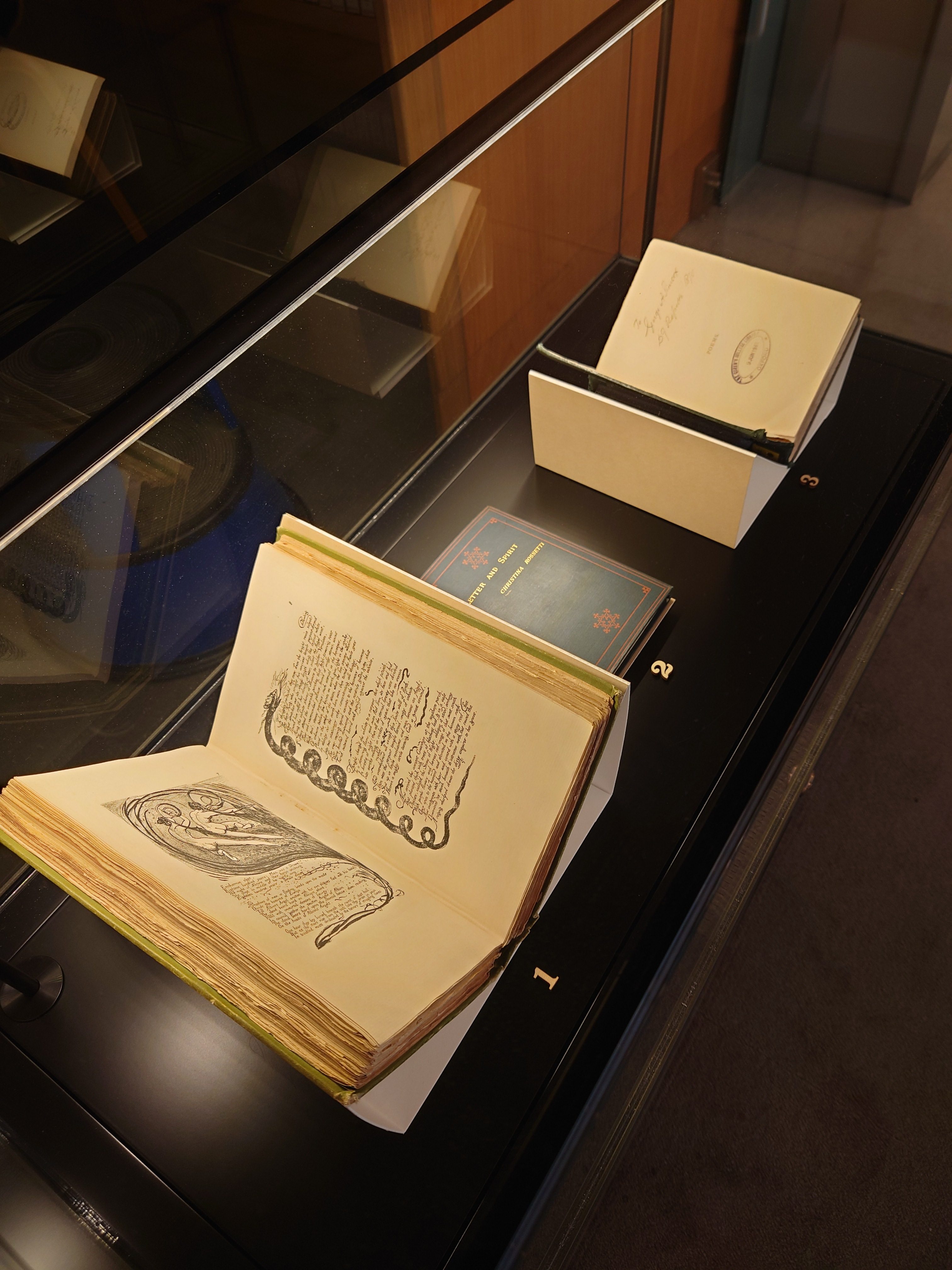
‘From the author’
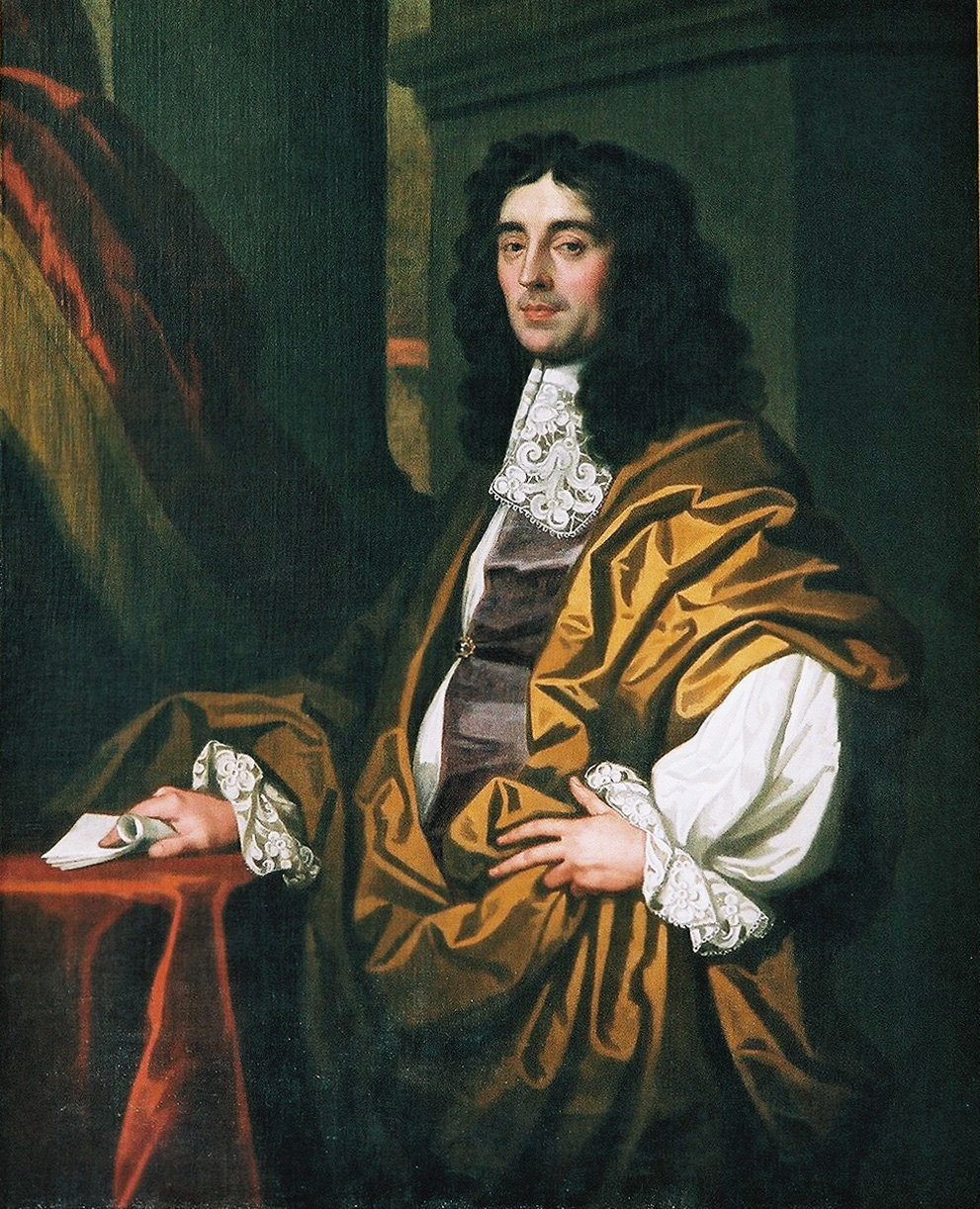
Joseph Williamson and the establishment of the transatlantic slave trade
